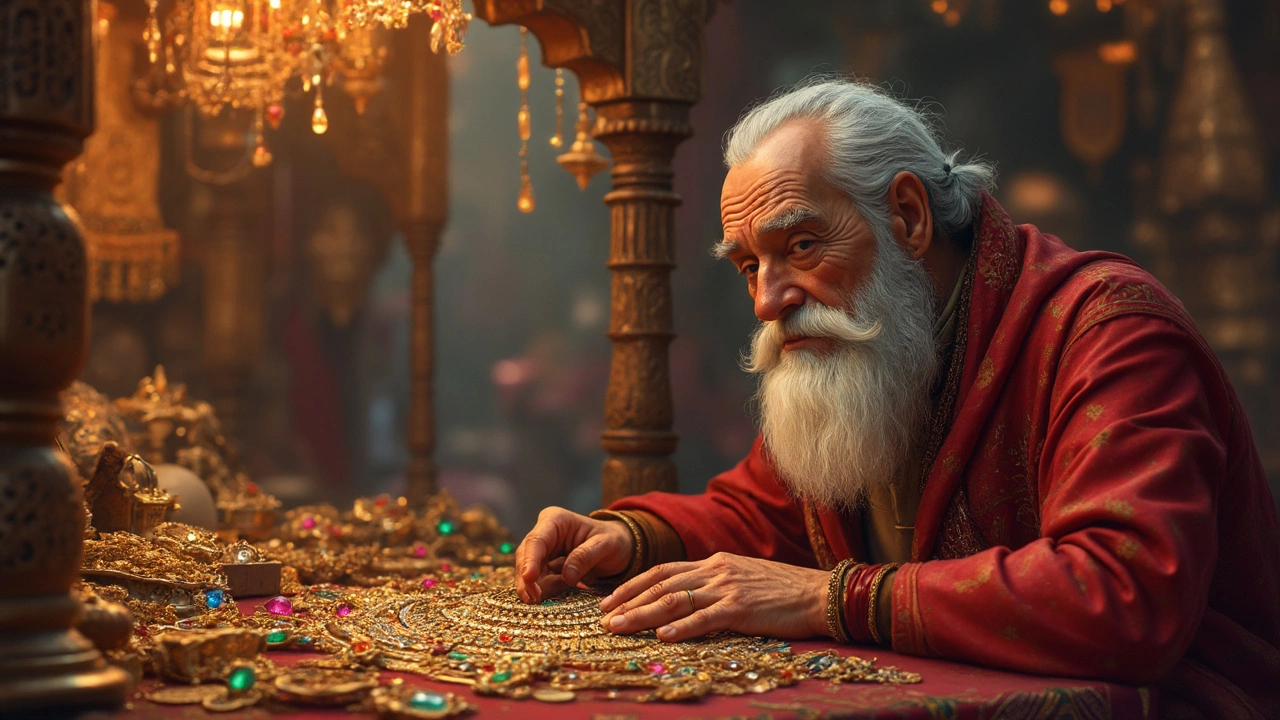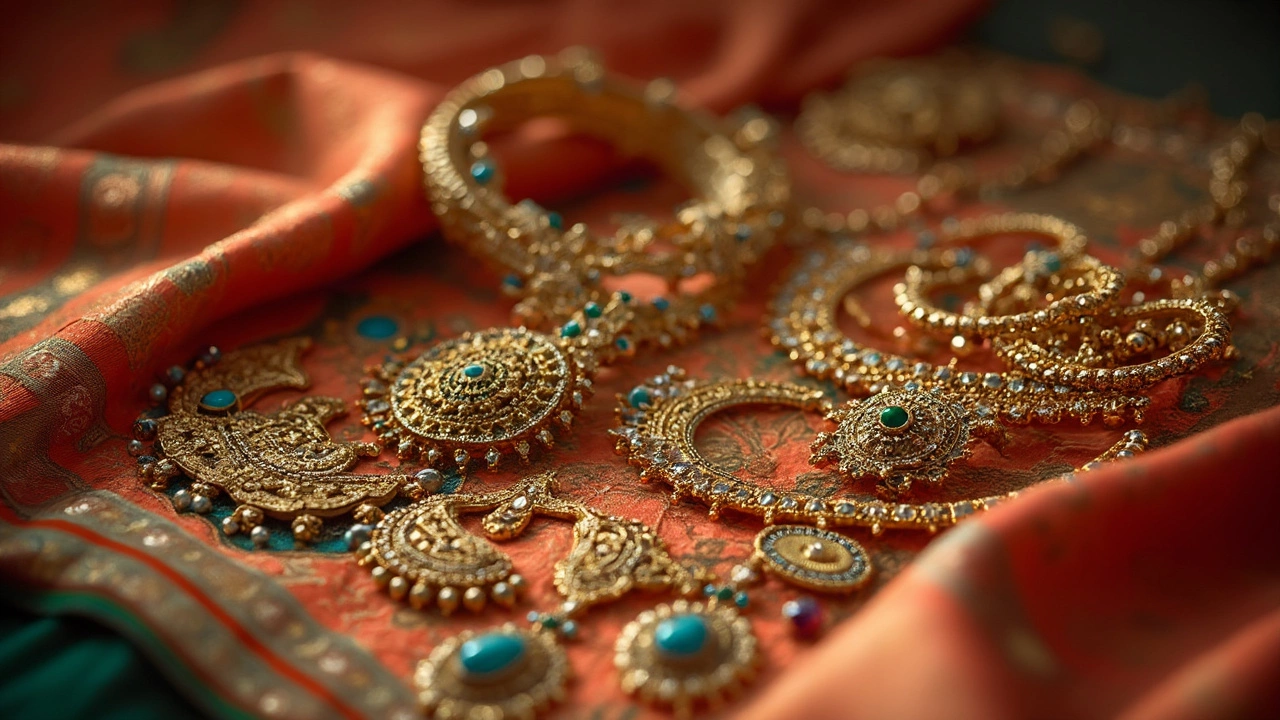
So, you've just found grandma's old jewelry box, and it's like you've struck gold, right? Before you rush off to sell those pieces, understanding what you've got is super important. We're talking about items that may date back decades or even centuries, each with its own story and style. Knowing what's in your hands can make a huge difference in how you sell it.
First off, it's all about spotting real antique jewelry. Pieces over a hundred years old have a charm and craftsmanship that's tough to beat. When you're looking at those old necklaces and rings, search for any hallmark symbols or inscriptions. These tiny marks can tell you a lot about where and when the piece was made, and even who made it. Got a magnifying glass? Now's a good time to use it!
But it's not just about age. Quality and rarity also play big roles in value. An item might glitter, but its true worth lies in factors like design, material, and condition. An expert appraisal is your best bet to get an accurate value. It might cost you upfront, but knowing what your stuff is worth is priceless when it comes time to sell.
- Understanding Antique Jewelry
- Assessing Value and Authenticity
- Choosing the Right Marketplace
- Tips for Effective Selling
Understanding Antique Jewelry
Antique jewelry isn't just old; it's packed with history and artistry. When you're diving into grandma's collection, the first thing to know is what qualifies as antique. Generally, a piece is considered antique if it's over 100 years old. So, if your find dates back to before 1925, you're in the antique zone.
Now, what makes these pieces so special? It's their unique craftsmanship and materials that often aren’t used today. Back in the day, jewelry was handcrafted with great skill and care. Gold, platinum, and silver were commonly used, but what makes an item really stand out is its gemstones. These aren't your run-of-the-mill gems. Think about rare stones or unique cuts like the old European cut diamonds – not something you'd easily find now.
Identifying marks or hallmarks on the jewelry can be a real treasure map. These small imprints can tell you a lot about a piece's origin and maker. Check carefully for any numbers, symbols, or letters that can reveal where it was made or the purity of the metal. These details can massively impact the item's value.
For a quick eye-opener, here's how some common hallmarks communicate valuable info:
| Hallmark Symbol | Indication |
|---|---|
| 925 | Sterling Silver |
| 18K | 18 Karat Gold |
| Maker's Mark | Jeweler's Identity |
Being aware of vintage and antique styles can also help. Victorian, Edwardian, and Art Deco are a few well-known styles featuring elaborate and intricate designs. These pieces often carry a premium, thanks to their distinct looks and appeal.
Ultimately, understanding the essence of these treasures isn't just about seeing what they're made of; it's about appreciating the artistry and stories they represent. And when you know their potential, you're better prepared to sell with confidence. So, take the time to dig a little deeper—it could turn that jewelry box into a goldmine.
Assessing Value and Authenticity
Alright, so you think you've got a gem from grandma's stash. But remember, not all that glitters is gold. Let's get into the nitty-gritty of assessing the real value of your antique jewelry. First thing's first, you want a professional appraisal. These experts look at all the little details, from the quality of the metal to the intricacies of the design. They can also catch wear and tear that might affect the overall value.
Next, let's talk about those hallmark symbols. These aren't just random stamps—they're the jewelry's passport. Check out these marks to determine where, when, and who made the piece. European marks often include the manufacturer, country, and sometimes even the specific year, giving you loads of info to work with. Handy, right?
But if you've got a piece that doesn't have a hallmark, don't despair. Other ways to estimate authenticity include looking at the style and craftsmanship. Certain styles follow specific periods, like Art Deco from the 1920s or Victorian pieces from the late 19th century. Knowing which era your jewelry fits into can help nail down its history, and sometimes its value.
Lastly, there's a bit of science involved. Testing for real gold or genuine stones might require professional tools, but it's worth it. For gold, there's the gold acid test kit, and diamond testers can check if those glitters are indeed diamonds or just fancy glass.
Including a quick guide:
- Get a professional appraisal to find out the item’s actual worth.
- Research hallmark symbols to uncover the jewelry's origins.
- Cross-reference the style to pinpoint the historical period.
- Use test kits for metals and stones to validate authenticity.
Knowing what you've got in your hands can turn antique pieces into a real payday, or keep you from letting go of something just because it looks old. Getting familiar with these steps is the savvy way to make sure you're getting the value Grandma’s jewelry deserves.

Choosing the Right Marketplace
Now, you're ready to find a place to sell grandma's jewelry. The right marketplace can make all the difference in getting a good price and a safe transaction. Let's explore some of the best options.
If you're looking for something convenient and easy to navigate, online marketplaces are a good start. Websites like eBay and Etsy can reach a global audience who loves antique jewelry. Just make sure to take clear photos, write detailed descriptions, and set a fair price using solid research or appraisal. Remember, these platforms charge fees, so factor that into your pricing strategy.
For something more personal, local antique shops and jewelry stores are great. Head over with the pieces and chat with the buyers. They can offer insights and sometimes a better price for good quality vintage jewelry. Plus, you avoid shipping, making it a less risky option.
- eBay: Perfect for large audiences, but fees can be substantial.
- Etsy: Ideal for niche buyers looking for unique designs.
- Local Shops: Personal touch and no shipping hassle.
Another cool option is auctions, both online and offline. Websites like Sotheby's and Christie's, known for high-profile sales, can work wonders if your jewelry is particularly rare or valuable. The downside? You'll need to pay a commission, and auctions can be unpredictable.
So, how do you decide? Consider the uniqueness of your pieces, how hands-on you want to be, and where you feel most comfortable selling. Each marketplace has its pros and cons, but the key is finding the one that best matches your needs and the potential of grandma's treasures.
Tips for Effective Selling
So, you've got grandma's jewelry all sorted and valued. What's next? Selling it for a good price, of course! Here are some practical tips to help you get the best deal on those antique jewelry treasures.
First, consider having professional photos taken of the jewelry. Clear, high-quality images can significantly increase the appeal of your items online. Remember, in this digital age, a picture really does speak a thousand words!
Next, know your market. Where you sell matters. Consider whether your pieces are better off going to an auction house, a jewelry store, or listed online. Auction houses can be great for rare, high-value items, while online marketplaces open up your audience to global buyers who are hunting for vintage jewelry.
Don't forget to set a fair price. Start with the appraisal value you got earlier and factor in any sales fees. Being flexible with pricing can help, but make sure you're still getting a fair deal. Sometimes buyers love to negotiate, and being a little flexible can close the deal.
If you're selling online, a good description can work wonders. Include everything you know about the piece – the era, materials, and condition. The more details, the better! Mention any distinctive features and craftsmanship that make it unique. It's all about selling the story as much as the jewelry itself.
Last but not least, don't shy away from using social media to showcase your items. Platforms like Instagram and Pinterest are fantastic for reaching jewelry enthusiasts who might be interested in buying directly.
- Take professional photos for better presentation.
- Choose the right platform: auction, store, or online.
- Set a fair yet competitive price based on appraisals.
- Craft detailed descriptions for online listings.
- Use social media to reach potential buyers.
With these tips, selling grandma's jewelry might just turn out to be one of the most rewarding adventures! Just remember, each piece has its own charm and potential waiting to be discovered by the right buyer.


